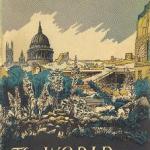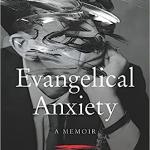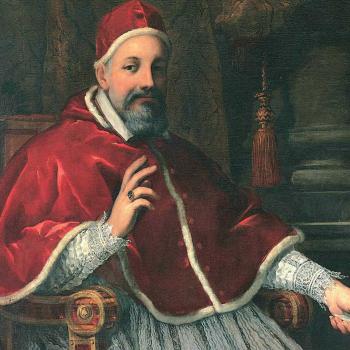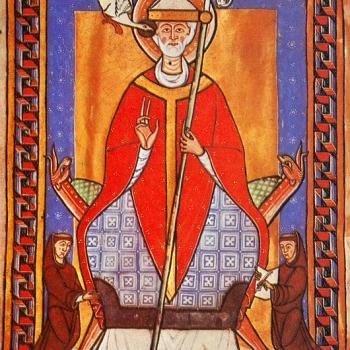We have the pleasure of inviting Dr. Paul Gutacker to the Anxious Bench today. Gutacker is the Executive Director of the Brazos Fellows. He earned his Ph.D. from Baylor University, and this post is adapted from chapters three and four of The Old Faith in a New Nation: American Protestants and the Christian Past, published in February 2023 by Oxford University Press. If you would like to learn more about this publication, you may listen to Gutacker’s recent Conference on Faith and History book talk with our editor, Joey Cochran.
In the summer of 1834, Presbyterian minister Lyman Beecher returned from Ohio to New England, seeking to raise money for the fledgling Lane Theological Seminary. Beecher wanted to warn Protestants of what he was witnessing in the west. In Cincinnati, where Beecher taught, the Catholic bishop Edward D. Fenwick had opened a Catholic grammar school in 1824, founded a seminary in 1829, started a Catholic college, and launched a weekly Catholic newspaper. Beecher returned east to urge Protestants to step up their investments in education on the frontier.
The message Beecher came to spread was distinctly anti-Catholic. On August 10, he visited three churches in the Boston area, preaching at each on the danger of Protestant children being educated at Catholic institutions. The next evening, in nearby Charlestown, a Protestant mob broke into, ransacked, and burned to the ground an Ursuline convent and boarding school. Afterward, Beecher condemned the mob and tried to distance himself from the violence; yet, only a few months later, he doubled down on his main point in A Plea for the West, an extended case that Catholic education and proselytization posed a serious threat to American liberties.
Beecher’s argument relied thoroughly on church history. He urged Protestants to learn well this history, as it served “to show that [Catholics] always have been hostile to civil and religious liberty.” He reminded readers of the “deeds of persecution and blood” of the Catholic past and worried that a religion that had been “so enslaving and terrible in its recorded deeds” now appeared “mild, meek, unassuming” because “the records of its history [were] denied, or forgotten.” The same church that had gone on crusades and overseen the Inquisition was now seeking to destroy American religious and political liberties.
Beecher was hardly alone among Protestant ministers of the day who believed that church history must be enlisted against the growing presence of Catholic immigrants and institutions. In 1834, Samuel Miller, longtime professor of church history at Princeton Theological Seminary, hastily penned an introduction to an anti-Catholic History of Popery—a book he confessed that he had not time to fully read—and stressed the urgency of its content: the Catholic Church in America was at that very moment being “strengthened by large emigrations from the old world.” He warned Protestants to arm themselves with scripture and history. “He who brings the corruptions of the Papacy to the test of God’s unerring word, and presents a dispassionate and unvarnished history of their rise, progress, and practical influence,” Miller promised, “cannot fail of convincing candid and intelligent minds of their pestiferous character.”
One of Samuel Miller’s students, Robert Baird, shared these concerns. In his landmark work Religion in America, Baird worried about the rising numbers of Catholic immigrants and the growth of parochial education: “Of all forms of error in the United States, Romanism is by far the most formidable, because of the number of its adherents, the organization, wealth, influence, and worldly and unscrupulous policy of its hierarchy.” Like his mentor, Baird believed that church history provided resources to combat Catholicism. In 1845, he published The Life of Ramon Monsalvatge, a narrative of a Spanish monk who converted to Protestantism. In the book’s preface, Baird contrasted Catholic “bigotry, ignorance, and ferociousness” with the light of “this Protestant country.” He then rehearsed the typical historical episodes that proved the corruption of the Catholic Church: the violence of the Inquisition, the martyrdom and persecutions of countless Protestants, and the “Black Legend” of Spanish cruelty in the Americas.
Other prominent Protestants joined the fray. The same year Lyman Beecher published his Plea for the West, Samuel F. B. Morse produced a book warning Americans of the quickly growing Catholic threat. A year removed from the burning of the Ursuline convent in Charlestown—Morse’s birthplace—he published Foreign Conspiracy against the Liberties of the United States. The book argued that the Catholic hierarchy, in alliance with Austria, was plotting to colonize America’s west through a tide of immigration and Jesuit-led Catholic education. Morse did not rest with words alone: in 1835 he helped found the Native American Democratic Association, and the next year stood as the nativist candidate for mayor of New York City.
Morse’s argument in Foreign Conspiracy shows the connections between church history and political activism, as he relied significantly on historical arguments to galvanize Protestant opposition to Catholic immigration. In fact, Americans, whose friendly experiences with Catholics led them to believe that religion was tolerant, were historically naive, according to Morse: “No one can be deceived by evidence so partial and circumscribed, while the blood of the persecuted for opinion’s sake, stains with the deepest tinge every page of the history of that church.” These horrors of medieval Catholicism were alive and well, as the methods of the “dark ages”—chains, soldiers, and Inquisition—were still in use in Austria. In a creative retelling of national history, Morse urged Americans to remember how their ancestors, the Puritans, fled from “Popish usurpation” to enjoy their religious rights in the new land. Morse implored his readers not to become the generation that saw America’s hard-won liberties undone by the reestablishment of Catholic tyranny.
Tellingly, Morse’s anti-Catholic screed was endorsed by prominent Protestant leaders. Foreign Conspiracy was prefaced by a letter from ministers from four denominations—the Episcopalian James Milnor, the Presbyterian Thomas De Witt, the Methodist Nathan Bangs, and the Baptist Jonathan Going—each of whom recommended the book. In their recommendation the ministers clarified that although they “disapprove of harsh, denunciatory language toward Roman Catholics, their past history” meant that Americans ought to be “jealous of their influence, and to watch with unremitted care all their movements in relation to our free institutions.” It was a shared Protestant memory of the Catholic past, in other words, that justified such virulent anti-Catholic nativism.
Other Protestant ministers agreed that historical memory was of political import. In 1836, William Craig Brownlee published Popery, an Enemy to Civil and Religious Liberty; and Dangerous to Our Republic. A Scottish-born clergyman who taught ancient languages at Rutgers College, Brownlee also served in Associate Presbyterian and Dutch Reformed churches. And he was a tireless opponent of Roman Catholicism: the same year that he wrote Popery, one of his several anti-Catholic publications, Brownlee founded the American Society to Promote the Principles of the Protestant Reformation. He wrote Popery to warn America’s men about the army “annually pouring in upon us,” made up of “prelates, priests, monks, nuns, and hundreds of thousands of the very offscourings of the European Catholic population!”
Like Morse, Brownlee grounded his nativism on religious history. Over two hundred pages Brownlee narrated the history of Catholicism as a story of persecution, violence, and oppression. He spared no rhetorical expense, recounting “agonies, and moanings, and shrieks of the oppressed” during the Spanish Inquisition, which, he told, “cost Spain in all two millions of lives!” The history of Christianity proved that Catholic principles were incompatible with republicanism and religious freedom. What was more, Rome was eager to prevent people from knowing about its sordid past: the histories written by John Locke, Johann Lorenz von Mosheim, and William Robertson, he claimed, had all been banned by the Catholic hierarchy. The modern Catholic Church, Brownlee concluded, was “the same evil, as in the Dark Ages.”
Brownlee’s rhetoric was too strong for some—the Christian Review conceded that the book was “hot and impetuous.” But even so, this anonymous critic appreciated the argument Brownlee was making and used the book review as a launching point to discuss questions surrounding American religious freedom and the dangers posed by corrupt Christianity. Again, religious history grounded the reviewer’s anti-Catholicism: he contrasted the genuine religion that flourished in America with “the mixed Christianity that began its career at an early period in the history of the church” and came to its full fruition in “the intolerance of edicts . . . bloody persecutions . . . sacrifice[s] to the incensed spirit of bigotry.” In other words, even those who disliked the pitch of anti-Catholic rhetoric agreed with the historical justification for anti-Catholic concern.
These anti-Catholic uses of church history fueled the nativism that eventually culminated in the Know Nothing Party of the 1850s. In the face of rising immigration and growing Catholic institutions, American Protestants found reasons in Christian history to limit Catholic participation in national life. The nativism that emerged by the 1830s was not merely a matter of populist prejudice or salacious literature, but was encouraged and propagated by serious Protestant historiography. While anti-Catholicism was driven by economic, ethnic, and gender-based concerns, the history of Christianity also played a significant role in the Protestant ministerial class’s crusade against Rome. Religious memory made anti-Catholic fears more believable, bolstered the informal establishment of Protestantism, and constructed the boundaries of Protestant national identity.
















